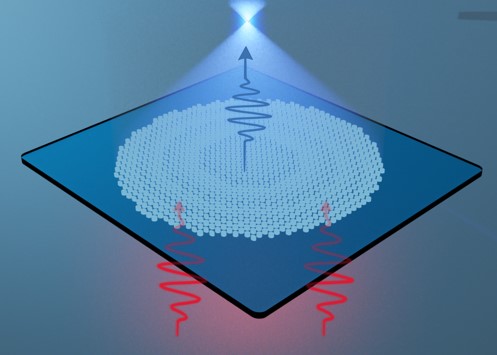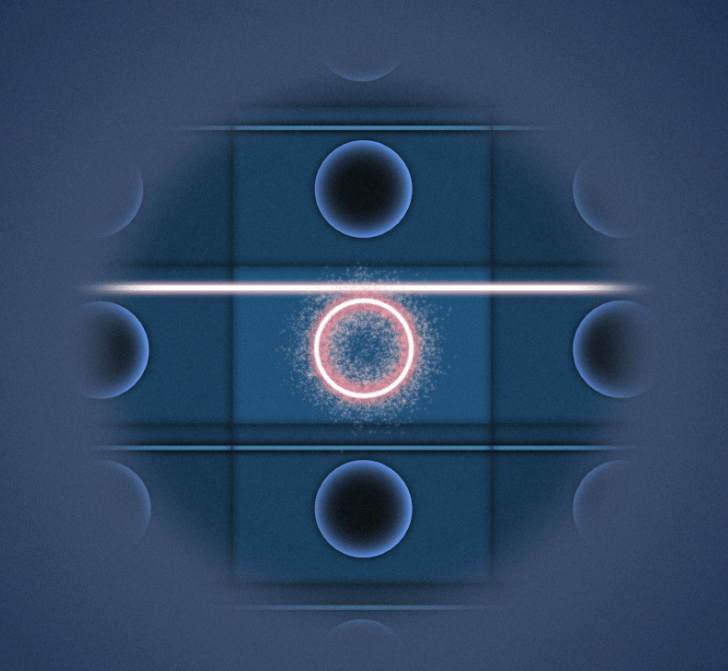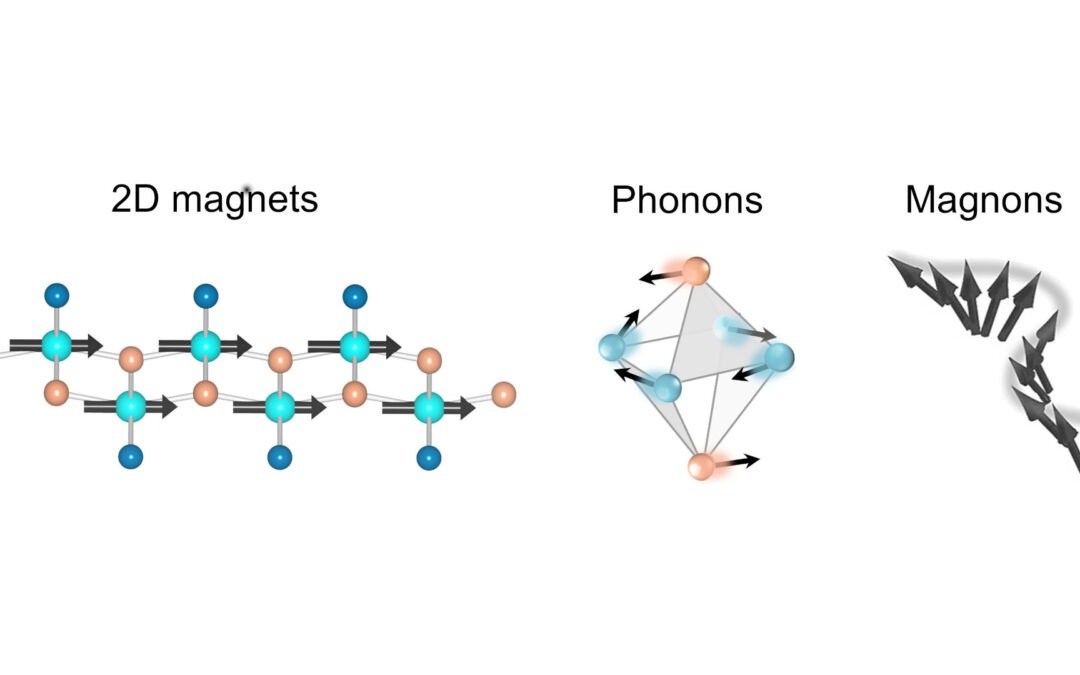
Meta-lens recently demonstrated by the DON group, where pairs of “red” pump photons at 1.55 µm generate and focus “blue” photons at 775 nm [Gigli et al., Optica 8, 269 (2021)]
Laboratory: MPQ (Matériaux et Phénomènes Quantiques), Université Paris Cité & CNRS
Address: Bâtiment Condorcet – 10 Rue A. Domon et L. Duquet – 75013 Paris
Contact: Prof. Giuseppe Leo
Tel: +33 (0)1 57 27 62 27, +33 (0)6 67 44 38 73
e-mail: giuseppe.leo@u-paris.fr
Metasurfaces are arrays of optical nanoantennas with sub-wavelength size. Before their appearance, the engineering of free-space propagation had always respected the paradigm of light being molded via phase accumulation over paths of several wavelengths. Recently, flat optics has revolutionized this framework, with the concrete perspective of replacing bulky and difficult-to-align assemblies of optical components with nanostructured thin films.
Metasurfaces also showed their potential in the nonlinear regime, mostly via the bulk nonlinearity of high-refractive-index semiconductors. In this context, we have achieved near-infrared second harmonic generation in both monolithic and hybrid AlGaAs-on-insulator platforms, with preliminary demonstrations of small nonlinear meta-gratings and meta-lenses for the second-harmonic field.
We currently aim at ultrafast dynamically controlled semiconductor-on-insulator ultrathin components for efficient nonlinear wavefront engineering, by exploiting metasurfaces that operate like phased-array antennas rather than photonic crystals. Their key asset is their capability to implement time-controlled wavefront shaping at the harmonic frequency, based on a lookup-table approach, with the approximate yet reasonable assumption of locality.
Within this framework, we search for a skilled and motivated post-doctoral fellow to explore new horizons of this forefront research domain. He/She will design, fabricate and optically characterize new nonlinear metasurfaces operating from the visible to the mid-infrared range. His/Her activity will mainly take place in Paris in the framework of the METAFAST EU Project, in close collaboration with CEA-Grenoble, Politecnico di Milano, and University of Brescia.
The combination of advanced design, fabrication and nanophotonic measurements will soon spur the transition of the young field of nonlinear meta-optics from fundamental research into a whole set of applied technologies. The natural positioning of this project, on both the production of fundamental knowledge and nanophotonic engineering, perfectly illustrates the fertility of this research domain, which is about to lead to a true paradigm shift in modern optics.
Skills: Experimental nanophotonics
Duration: 18 months (renewable), funded by METAFAST EU Project (H2020 #899673)
Start: Fall 2023
Net salary: 2250 € per month
À lire aussi

TUPHO, for large-scale production of integrated photonic circuits
The TUPHO project is an initiative that aims to bridge the gap between upstream innovation and large-scale production in the integrated photonic circuits (PICs) industry. It is led by Hamidreza Neshasteh and Ivan Favero, members of the Light and Mechanics team at MPQ...

Towards light control of van der Waals magnets
Laboratoire: MPQ (Matériaux et Phénomènes Quantiques), Université Paris Cité & CNRS Adress: Bâtiment Condorcet – 10 Rue A. Domon et L. Duquet – 75013 Paris Internship/PhD supervisor: Niloufar Nilforoushan and Yann Gallais Tel: 0157276223 e-mail:...

Seminars
2025-2026 MPQ general seminar series organized by Niloufar Nilforoushan and Valentin Cambier Prof. Sebastian Loth — Institute for Functional Matter and Quantum Technologies, University of Stuttgart, GermanyTitle: Coming soonJan. 16, 2026 at 11:00 am — Salle Luc...

On-Chip Ferromagnetic Resonance for van der Waals Heterostructures: Anisotropy and Damping of Cobalt Interfaced with Exfoliated 2D Materials
A collaboration between the technical hub, the clean room platform and the TELEM group at MPQ laboratory has developped a new experiment demonstrating that standard broadband ferromagnetic resonance can still be effective to probe the magnetization dynamics of “thin...
